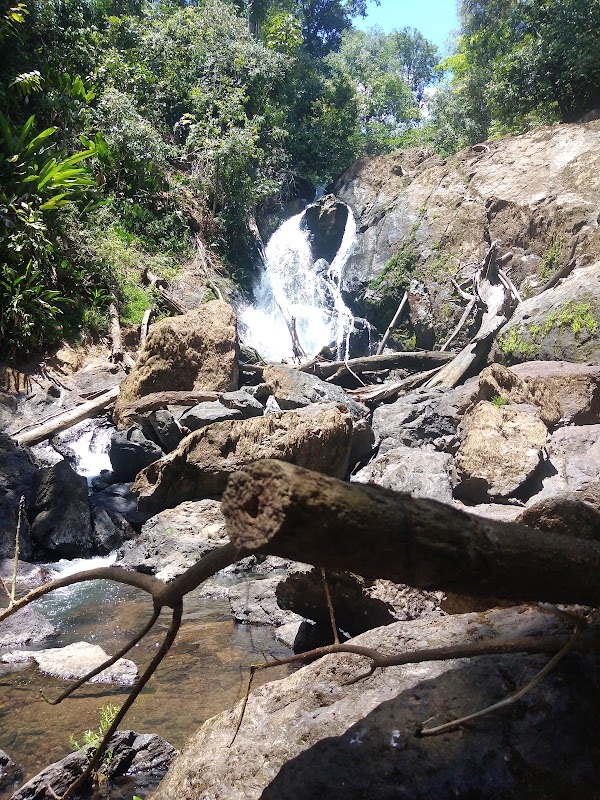Top Backcountry Hiking Routes Around Corcovado National Park: Remote Trails and Wild Coastal Views
Explore Corcovado National Park’s most remote backcountry trails where dense rainforest meets the wild Pacific coast. This guide offers practical insights and vivid descriptions for hikers seeking both challenge and breathtaking views in one of the world’s most untamed natural landscapes.
Hire a Certified Park Guide
Corcovado requires backcountry hikers to be accompanied by official guides who understand the terrain and wildlife behavior, ensuring safety and compliance with park rules.
Prepare for River Crossings
Many trails involve multiple river crossings, which can be swift and challenging during rainy months—waterproof boots and trekking poles increase stability and safety.
Start Early and Pace Yourself
Morning hikes avoid afternoon downpours and maximize chances to spot active wildlife while cooler temperatures improve stamina.
Pack Water Purification
Natural water sources are abundant but not always safe; bring reliable filtration or purification tablets to stay hydrated without carrying excess weight.
Top Backcountry Hiking Routes Around Corcovado National Park: Remote Trails and Wild Coastal Views
Corcovado National Park, set along Costa Rica’s Osa Peninsula, thrives as one of the planet’s most fiercely wild rainforests. Its backcountry trails cut through dense forest, cross rushing rivers daring you to go further, and open unexpectedly to wild Pacific coastlines where waves relentlessly push into shore. For hikers who want isolation paired with thrilling views, this park offers routes that reward with raw encounters and deep connection to untamed nature.
One standout route, the Sirena Ranger Station Trail, spans about 13 kilometers (8 miles) one-way with an elevation gain of roughly 400 meters. The path is rugged—muddy in spots and rocky on hill climbs—but it threads through wildlife-rich canopy and along rivers that seem intent on slowing progress with their steady currents and sudden crossings. Hikers should expect a full day's commitment here. The payoff is a panorama of jungle meets ocean, where the forest's green fingers touch the sea's turbulent edge.
Another option is the Los Patos Trail, a 22-kilometer (14-mile) challenge with compacted elevation gains under 500 meters. This trail winds into more remote territories, connecting rainforest, mangrove-lined bays, and unspoiled beaches. Expect soft forest floors mixed with slippery root systems, demanding solid footwear and steady footing. The shifting terrain tests both stamina and focus.
For those seeking shorter, equally wild options, the Matapalo Trail offers about 7 kilometers (4.3 miles) through undisturbed landscape with a moderate 300-meter climb. The trail snakes along quiet creeks and ends with the crashing ocean below, where seabirds wheel against the horizon.
Practical planning is essential here—bring plenty of water and purifying options as streams won’t always be reliable or safe to drink. Sturdy, waterproof boots will guard against mud and swollen river crossings, especially during wet seasons. Timing your hikes for early morning departure lets you avoid afternoon rains and the park's busiest wildlife activity hours. Note that guides are mandatory on backcountry trails; their knowledge of terrain and wildlife ensures safety and respects park regulations.
Approach these trails prepared for a landscape fiercely itself—respect the jungle’s unpredictability and coastal winds that speed your pace or slow it down. Your senses will heighten as birds call, insects buzz, and rivers sing. This isn’t just a walk; it’s a sustained conversation with untamed elements and raw beauty.
Whether you’re an experienced trekker or a seasoned nature lover, Corcovado’s backcountry routes offer a blend of practical challenge and enriching experience. The trails invite you not to conquer, but to move with the forest and sea, following paths where nature dictates the rhythm and pace.
Nearby Trips
All Adventures
Boat Charters
Water Activities
Adventures near Puerto Jiménez
Discover the unique and memorable adventures that make Puerto Jiménez special.
Frequently Asked Questions
Do I need a special permit to hike in Corcovado’s backcountry?
Yes, visitors must register and are required to hike with a certified guide to protect the park's ecosystem and ensure safety.
What wildlife can I expect to see on these trails?
Expect encounters with tapirs, scarlet macaws, howler monkeys, and possibly elusive jaguars; trails cross varied habitats rich with birds and mammals.
How physically demanding are these backcountry hikes?
Hikes range from challenging to difficult due to uneven terrain, river crossings, and distance; a good level of fitness and proper preparation are essential.
Are the trails clearly marked?
Trails are maintained and marked, but dense jungle conditions can obscure paths, making a guide indispensable.
Can I camp overnight along these routes?
There are designated campsites near Ranger Stations like Sirena, but all overnight stays require prior arrangement with park authorities.
What safety concerns should I be aware of?
Beware of sudden river floods, poisonous insects, and unpredictable weather. Guidelines by park rangers and guides should always be followed.
Recommended Gear
Waterproof Hiking Boots
Protect feet from mud, water and provide grip on wet roots and rocks across river crossings.
Lightweight Rain Jacket
Keeps you dry and warm during heavy tropical rains without overheating.
Trekking Poles
Aid balance during difficult river crossings and steep terrain sections.
Water Purification System
Filters or tablets ensure safe hydration from natural sources.
Local Insights
Hidden Gems
- "The rarely visited Ford’s Pond area offers tranquil birdwatching away from main trails."
- "A little-known viewpoint called Mirador Tigre rewards hikers with sweeping jungle panoramas often overlooked."
Wildlife
- "Look for the bright colors of the resplendent quetzal and the giant, elusive harpy eagle."
- "The park is home to tapirs that sometimes cross trails at dawn and dusk."
History
"Corcovado’s indigenous communities historically used parts of the land sustainably before it became a national park, and some cultural influences remain in local guiding traditions."

